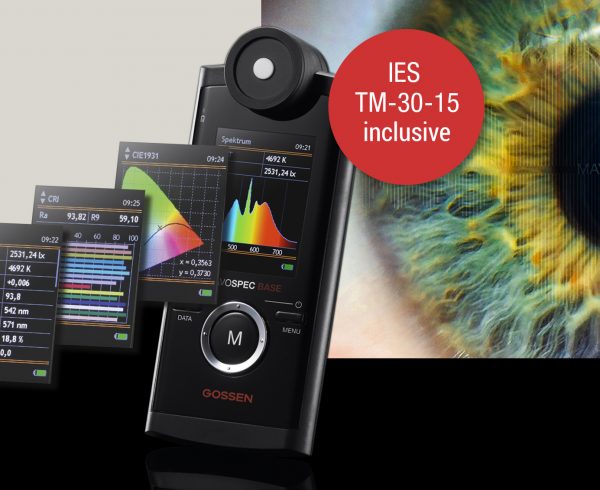LED lighting on the rise
In recent years, LED lighting technology has spread more and more in stadion, studio and stage lighting because of its durability and energy efficiency. This development did not always take place to the delight of the television and film production industry, as the individual spectrum of an LED light source in particular can lead to incorrect color representation and color casts. An effect that can only be corrected by expensive post-production after the recording.
Assessment of color rendering
The previous assessment of the color rendering of LED light sources using the Color Rendering Index (CRI) with both 8 and 14 or 15 reference colors did not always lead to realistic color impressions in the image material, even if the measured values have been very good. This is why the European Broadcasting Union (EBU) has published the Television Lighting Consistency Index (TLCI) for assessing color rendering. The measurement procedure is described in EBU TECH 3355 and the EBU R 137 recommends its use when purchasing new lighting equipment.
TLCI – A New Approach
Unlike the direct evaluation of the color rendering of a luminaire, as is done with the CRI, the TLCI mimics the specific features of a complete television camera and display that influence color performance. It uses 18 reference colors that are relevant for both recording and playback devices and thus enables a much more precise assessment of color rendering. As with the CRI, the scale goes up to 100 and the higher the number, the better. With a TLCI of 85 or higher, a video camera with little or no adjustment can be used.
DIN EN 12193:2019-07 “Light and lighting – sports lighting”
The new version of the standard takes into account the requirements for television and film recordings that have arisen from new camera and broadcasting technology in relation to High Definition (HD), Ultra High Definition (UHD) and 3D. The Television Lighting Consistency Index (TLCI) replaces the general color rendering index for cameras. The TLCI and its measurement are therefore part of the updated standard.
Measurement with the MAVOSPEC BASE
With the new firmware V1.3.0, the MAVOSPEC BASE can determine the TLCI and display it together with the spectrum, the reference spectrum, the radiator type, the standardized distance to the standardized color temperature and the color temperature. A Qa Pie chart with the values for the individual Color Checker colors is displayed as an overview. The information for any necessary color adjustments is suggested in the Colorist Advice Table for Sector, Lightness, Chroma and Hue. The EXCEL templates for the V2.1 evaluation have been expanded to include a TLCI measurement protocol.

EXCEL Auswertung V2.1 – TLCI Measurement Protocol




MAVOSPEC BASE – Screenshots




